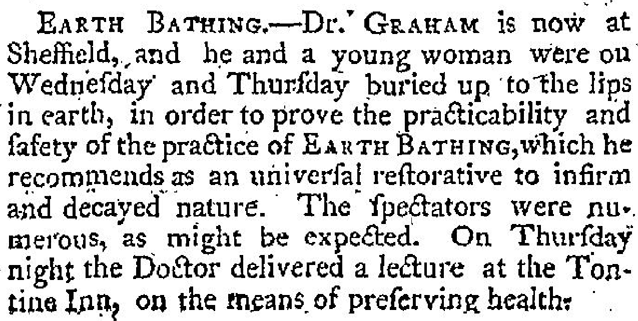
James Graham (1745-94) was a Scottish-born quack physician, notorious for his alternative treatments and bizarre theories. Graham started a medical degree in his native Edinburgh but quickly dropped out of college. He lived in Yorkshire for a time, then spent several years traveling and working in North America and Europe before settling in London.
Tall, handsome and eccentric, Graham became a popular figure in London society. As a physician, he specialised in sexual problems, though his ‘treatments’ were highly unorthodox. Childless couples were told to make love on a mattress filled with stallion hair; barren women were advised to wash their genitals in champagne.
In 1781 Graham both scandalised and fascinated London by unveiling his new premises, the Temple of Hymen in Pall Mall. The showpiece of this temple was Graham’s ‘Celestial Bed’, a gaudily decorated vibrating bed that promised great improvements in love-making and conception.
According to Graham these long stints in the “all-fostering bosom of our original mother” opened the pores and leached toxins from the body. ‘Earth-bathing’ was considered good for many ailments but was particularly effective for curing venereal disease, gout, scurvy, rheumatism, leprosy, cancer, insanity and numerous types of infection. ‘Earth-bathing’ also suppressed the appetite, claimed Graham, so the obese were urged to bury themselves up to the lips, for up to six hours on end.
Graham himself ‘earth-bathed’ hundreds of times, usually as a public spectacle. Scores of Londoners handed over a shilling to watch Graham and an equally-naked female companion being interred in a garden bed. Graham’s ‘earth-bathing’ fad lasted until the early 1790s, by which time he had started to show signs of insanity, possibly the result of opium addiction. He returned to Scotland, where he died in 1794.
Source: The Times, October 14th 1791. Content on this page is © Alpha History 2019-23. Content may not be republished without our express permission. For more information please refer to our Terms of Use or contact Alpha History.

